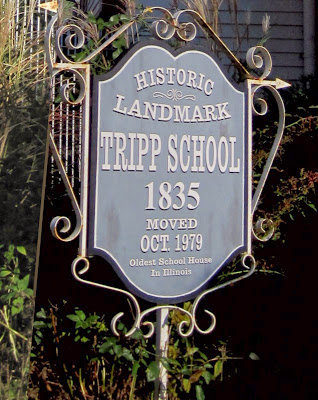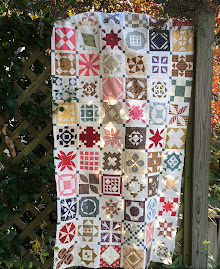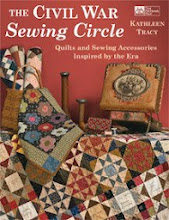I haven't been drawn to the small ones I see at quilt show vendors' booths either and those I do see at antique shops or even on ebay are usually much too costly. I'm also not lucky enough to have had grandma's quilts handed down to me--I am the first quilter in my family. Notice I didn't say ONLY--I'm hopeful that I can recruit a few in the future and pass on the tradition. So, mostly I try to reproduce the patterns I like from old quilts and use reproduction fabrics to make my own NEW quilts that have a little bit of an antique touch. Works well for me. But I still like to look around at antique malls and this particular place has a pretty good array of shops.
I was half hoping to find something else for another collection I started, but not looking for a quilt. Isn't it funny how something often turns up when you're not really looking for it? You just never know. What kind of vintage treasure would it be this time?
This quilt is cool, but several hundred dollars cool? Better keep looking . . .
I spotted this one at a different shop, beneath some old textiles piled up on a chair in a corner, and it IMMEDIATELY called out to me.
I've always been drawn to schoolhouse quilts (I made a little red and blue one for my book Prairie Children and Their Quilts a few years ago). The fact that it was so faded and worn and in need of repair made me think of an antique doll or child's quilt that had been played with extensively. It looked forlorn, almost like it had been hidden because someone decided it held no value to anyone anymore. The price turned out to be affordable and the fact that I rarely EVER see schoolhouse quilts made it even more appealing. I couldn't resist. Don't know why. I had to rescue that quilt, regardless of the shape it was in.
The blocks are hand pieced and the quilt is tied, not quilted. It is definitely well worn and loved, has significant fading, a few stains and tears and is really in need of some good care. But it has such a primitive look and is truly a great piece of folk art. I couldn't just leave it there.
So I'm working on trying to date it. I know that schoolhouse quilts were popular in the late 19th century and that trend continued into the 1920s and '30s. According to the International Quilt Study Center in Nebraska, "For rural women of the late nineteenth century, teaching was both the most prestigious and the highest paying opportunity available to them. The Schoolhouse pattern, which became popular at the same time, may reflect the lives of the many women who helped support their families through teaching positions, prior to their marriage."
My quilt contains fabrics that are reminiscent of the late 1800s--double pinks, indigo and brown. And here's one you'll love--one of the fabrics used in the border is the SAME print as one in my reproduction collection! I recognized it right off as one I bought within the past year or two, but I only have a small piece without the selvedge left so I don't know who reproduced it. Maybe some of you also have this repro pink fabric (on the bottom). If anyone recognizes it, hopefully I can find out whose fabric line it belongs to:
My instincts tell me that the quilt was not made as late as 1920, particularly since it contains fabric that appears older and the binding is made from turning the edge of the backing to the front of the quilt, a technique used in the 19th century. Is it worth restoring? I'll be able to devote more time to that question after I'm finished with the book I'm working on. But it sure seems like I have enough similar fabrics in my collection to use to restore some of the blocks. Next year, while I'm taking my time repairing the damaged patches, I'll think about the woman from long ago who made it--Where was she from? Did she live on the prairie? Was she a teacher?--and try to bring that little schoolhouse quilt back to life.





























































